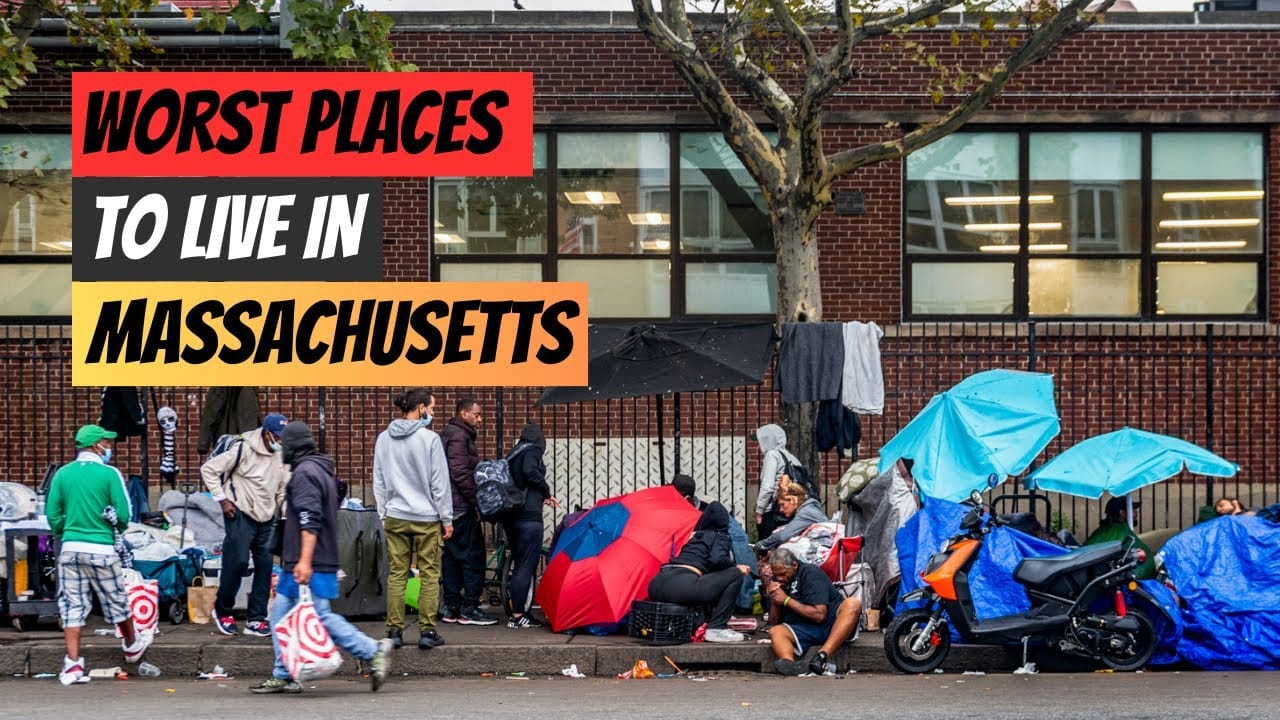Massachusetts consistently ranks as a desirable place to live thanks to its top-notch schools, strong economy, and rich historical significance. However, like any state, it has areas that are less desirable than others. This article explores five cities in Massachusetts that consistently rank low due to factors such as crime, poverty, and limited opportunities.
1. Springfield, Massachusetts
- High Crime Rates: Springfield consistently grapples with higher crime rates than the national average, especially in the areas of violent crime and property crime. This creates a sense of unease and can detract from the overall quality of life.
- Economic Hardship: Springfield faces significant economic challenges, with high unemployment rates and a sizable percentage of the population living below the poverty line. These factors contribute to social problems and limited opportunities for residents.
- Deteriorating Infrastructure: Parts of Springfield suffer from aging and deteriorating infrastructure, including roads, bridges, and public buildings. This can negatively impact residents’ daily lives and the city’s overall appeal.
2. Holyoke, Massachusetts
- Extreme Poverty: Holyoke has one of the highest poverty rates in Massachusetts, leaving a significant portion of its population struggling to make ends meet. This deep-rooted poverty severely impacts the quality of life for many residents.
- Limited Economic Opportunities: Job prospects in Holyoke are scarce, with many traditional manufacturing jobs having disappeared. This lack of economic opportunity perpetuates the cycle of poverty and makes it difficult for residents to improve their circumstances.
- Struggling Education System: Holyoke’s schools face numerous challenges, including low graduation rates and limited resources. This can hinder young people’s opportunities for future success and contribute to the overall difficulties facing the city.
3. Brockton, Massachusetts
- Elevated Crime Rates: Although crime rates in Brockton have decreased in recent years, they remain higher than in many other Massachusetts communities. This can affect residents’ sense of safety and security.
- Economic Stagnation: Brockton has struggled to revitalize its economy, resulting in limited job opportunities and a sense of stagnation for many residents.
- Social Issues: Brockton grapples with social issues such as drug abuse and gang activity, which can negatively impact the community’s well-being.
4. Fall River, Massachusetts
- Economic Decline Post-Industrial Era: Once a thriving textile manufacturing center, Fall River has experienced significant economic hardship since the decline of the industry. This has led to persistent high unemployment and poverty rates.
- High Poverty Rates: Fall River has one of Massachusetts’ highest poverty rates. This widespread economic hardship severely impacts residents’ quality of life and limits opportunities.
- Limited Employment Options: The lack of diverse job opportunities in Fall River makes it difficult for residents to find stable, well-paying employment. This contributes to the cycle of poverty and economic stagnation.
5. New Bedford, Massachusetts
- High Crime Rates: New Bedford struggles with crime rates above the national average, particularly in the areas of property crime and violent crime. This can contribute to a sense of unease among residents and impact the overall livability of the city.
- Opioid Crisis: Like many communities across the nation, New Bedford has been severely impacted by the opioid crisis. This has led to increased crime rates, social problems, and strains on public health resources.
- Economic Challenges: While New Bedford has made strides in economic development, it still faces challenges with high poverty rates and limited employment opportunities in certain sectors.
Sources
- FBI Uniform Crime Reporting (UCR) Program: https://ucr.fbi.gov/
- U.S. Census Bureau: https://www.census.gov/
- Massachusetts Department of Labor and Workforce Development: [invalid URL removed]
- City-specific websites and data portals (e.g., Springfield Police Department, Holyoke Data Dashboard)
Conclusion
While the five cities highlighted in this article face significant challenges, it’s important to recognize that they also possess strengths and potential. Many communities are actively working to address these issues, implement revitalization plans, and create better opportunities for their residents.
It’s important to use this information as a starting point for further research and to gain deeper insights into specific neighborhoods. These rankings should not deter people from exploring all that Massachusetts offers. It’s a state with a diverse range of cities, towns, and communities, each with its unique character and potential.
Disclaimer: Statistics and rankings can change, so it’s always good to check the most up-to-date information before forming solidified opinions on a community. Additionally, these are just five examples – other cities in Massachusetts might struggle with similar or different challenges.



